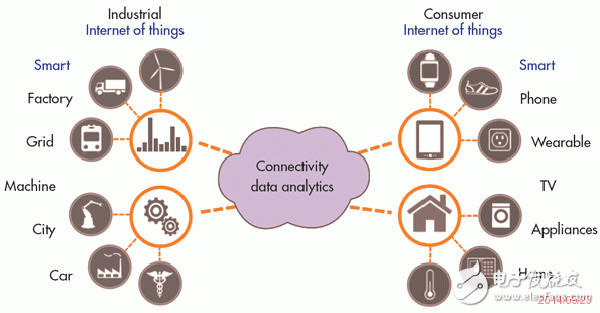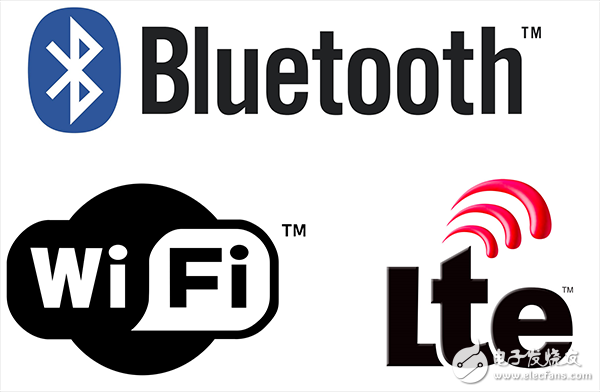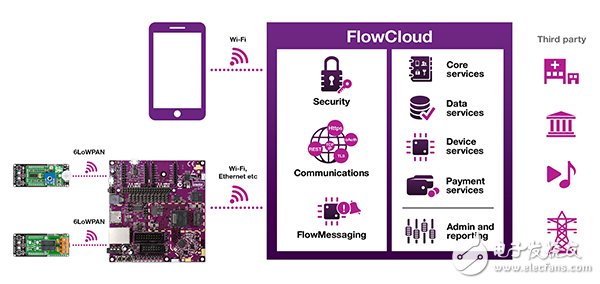
If you have been in the wireless industry for a certain amount of time (as it is), the introduction of a new interconnection standard and its adoption by the market is mainly due to its speed and return – both of which basically determine the development of this interconnection standard.
Of course, there is still room for development, and I think this is a very valuable and meaningful experience, especially for consumers.
However, as we carefully analyze the current Internet of Things (IoT) market and various emerging interconnection standards, I believe that a different strategy is needed to enable users to efficiently use and deploy Internet of Things (IoT) applications.
The first thing the wireless industry needs to do is to divide the Internet of Things (IoT) into two parts: the Industrial Internet of Things and the consumer Internet of Things. I think these two aspects are equally important - for the sake of simplicity, I mainly focus on consumer Internet of Things and discuss with you.

When I first thought about the consumer Internet of Things, I always thought of mobile phones. Because everyone usually has a phone, today's phone (or tablet) is the device of choice for most consumers. Now with three efficient communication standards, almost all mobile phones have support, I call them "three big trees": Bluetooth (classic Bluetooth or smart Bluetooth), Wi-Fi (supports multiple forms) and cellular communication ( 3G or 4G).

I think that the consumer Internet of Things industry will be closely related to the development of these three standards in the future. Let me take a closer look. In my early career, I tried to convince many mobile phone manufacturers to let their devices support UWB (Ultra Wideband). At the time, the company I worked for gave a successful demo demo, and many OEMs (original equipment manufacturers) were also very excited, but they all had the same problem: they did not have the resources available to integrate the new protocol stack into the mobile phone.
The same problem still exists, and it is still very difficult for mobile phones to support a new wireless standard that complies with the Internet of Things (IoT) specification. For example, NFC has been promoted as an ideal and secure way to share files between mobile devices for several years. Until Apple, Google and Samsung launched their payment functions, NFC was gradually adopted, and now consumers are starting to Think NFC is a must-have feature for mobile phones.
On the other hand, the replacement of the Bluetooth standard is not very difficult, because silicon vendors and OEMs already support the Bluetooth protocol stack, which means they only need to make simple modifications on the existing basis.
The same is true for Wi-Fi (for example, using the Wi-Fi HaLow standard) because it is a change of the same standard, only need to add more features.
The same applies to cellular communications: Many mobile phones now support the LTE standard cellular protocol stack, so it is not difficult to get Cat-0 to support the Internet of Things (IoT).
Now "three big trees" are all exerting their strengths in interconnected technologies and seeking opportunities to enter the field of consumer Internet of Things (IoT). For example, many companies are pushing the 802.15.4 communication standard to the consumer space. In fact, I think these low-power standards are very suitable for the Internet of Things (IoT), and I have done a lot of work related to these standards development.
However, if companies do not begin to seriously consider users and actual applications, they will find it difficult to apply the 802.15.4 interconnection standard to the consumer Internet of Things (IoT) space. Of course, this does not mean that these interconnection standards cannot be integrated into the gateway device. Many companies specializing in custom furniture hubs and routing are designing multi-standard interconnected home systems. However, many companies fail to find the right model and cannot develop products that meet consumer requirements.
The biggest thing consumers (including smart home enthusiasts) spoke is the number of applications, they have to execute an application for each indoor sensor, so using a cloud-based service and open source API interface mode will be much more convenient.
By running multiple applications (Apps) in a cloud-connected home hub, you can collect data from all sensors and display them on the same user interface, thus avoiding users facing different UI interfaces and complex operations. method
The figure below shows the Consumer Internet of Things (IoT) architecture in more detail. You can use a mobile device or laptop to communicate with your home hub via Wi-Fi. Sensors can use 802.15.4 communication standards (such as 6LoWPAN, Zigbee, Thread, etc.) to pass data to the hub, and the IoT hub collects all sensor data. Perform some data calculation processing operations and finally push the results to cloud storage, which is safe and efficient. It allows consumers to easily and intuitively access data stored in the cloud, giving consumers the feeling that they can easily control everything in the home.
If you're looking for a case that fits this consumer Internet of Things (IoT) model, the Creator Ci40 Development Kit is a great example of how Wi-Fi, Bluetooth and 802.15.4-based interconnects are deployed and functioning properly. work.
The Creator Ci40 IoT Hub uses a high-performance MIPS architecture processor that supports multiple interconnect standards (802.11b/g/n/ac 2x2, Classic Bluetooth and Smart Bluetooth and 802.15.4 standards). The two sensors (temperature and action) and switches on the board use a MIPS MCU (microprocessor) that also supports the 802.15.4 interconnect standard. Finally, this home hub will use FlowCloud technology to connect to the cloud. We provide the SDK development environment so that developers can use the API we provide to develop native or cloud app applications. The SDK supports iOS and Android.

This development kit also shows the scalability of our hardware and software IP. The Ci40 IoT Hub uses MIPS I-Series multi-threaded multi-core CPUs for data processing, while the high-speed interconnect is handled by the Ensigma Explorer RPU. The sensor operates with low power and leverages the MIPS microcontroller family of processors. For next-generation sensor designs, we also announced Ensigma Whisper RPUs that support low-power Wi-Fi and Bluetooth and 802.15.4-based communication protocols.
The Creator Ci4 Development Kit 0 is a perfect example of the actual Internet of Things (IoT) application development architecture specifically designed for real-world applications. Next time I plan to discuss the requirements and applications of the Industrial Internet of Things (IoT) and M2M markets.
The product is manufactured in accordance with GB4004-83, JB/T7600.3-94 and DlN46395 standards. Its common carbon steel Q235 thin steel plate punched into corrugated type serves as the lateral plate; And its mandrel and major body are supported by four-groove reinforcing steel bars. The product has the characteristics of not only strengthening the strength of bobbin, but also having light weight of bobbin, which can be used for buncher, stranding machine, extruder, cabling machine and armouring machine.
| Serial Number | Specification Model | Lateral Plate Diameter D1 | Major Diameter D2 | Axle Hole Diameter D4 | Carrying Hole Diameter D5 | Center Distance E of Axle Hole and Carrying Hole | External Width L1 | Internal Width L2 |
| 1 | 800 | 800 | 400 | 80 | 40 | 160 | 600 | 500 |
| 2 | 1000 | 1000 | 500 | 80 | 40 | 160 | 750 | 630 |
| 3 | 1120 | 1120 | 560 | 80 | 40 | 160 | 850 | 710 |
| 4 | 1250 | 1250 | 630 | 80 | 40 | 160 | 950 | 800 |
| 5 | 1400 | 1400 | 710 | 80 | 65 | 300 | 1060 | 900 |
| 6 | 1600 | 1600 | 800 | 80 | 65 | 300 | 1180 | 1000 |
| 7 | 1800 | 1800 | 1000 | 100 | 65 | 300 | 1320 | 1120 |
| 8 | 2000 | 2000 | 1120 | 1235 | 65 | 300 | 1500 | 1250 |
| 9 | 2240 | 2240 | 1250 | 125 | 65 | 300 | 1700 | 1400 |
| 10 | 2500 | 2500 | 1500 | 125 | 65 | 300 | 1900 | 1600 |
| 11 | 2800 | 2800 | 1800 | 140 | 65 | 300 | 2120 | 1800 |
| 12 | 3150 | 3150 | 2000 | 160 | 65 | 500 | 2300 | 2000 |
| 13 | 4000 | 4000 | 2800 | 200 | 80 | 500 | 2300 | 2000 |

Corrugated Wire Spool, Corrugated Cable Spools, Cable Spools For Sale
NINGBO BEILUN TIAOYUE MACHINE CO., LTD. , https://www.spool-manufacturer.com